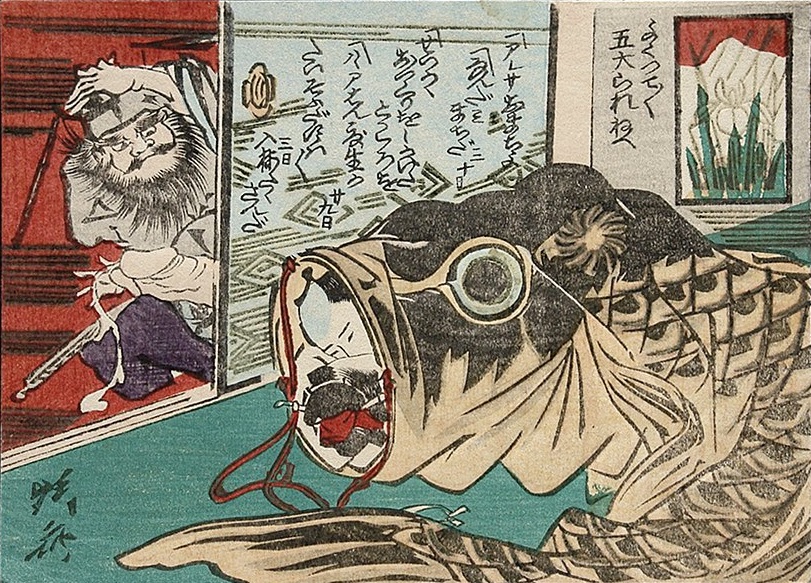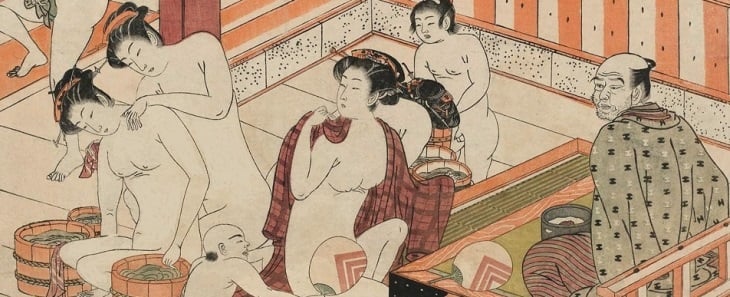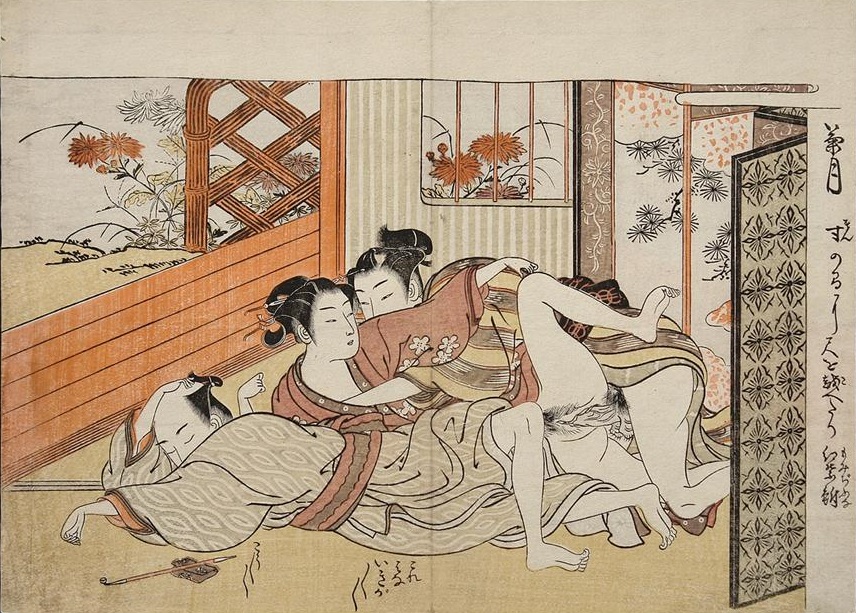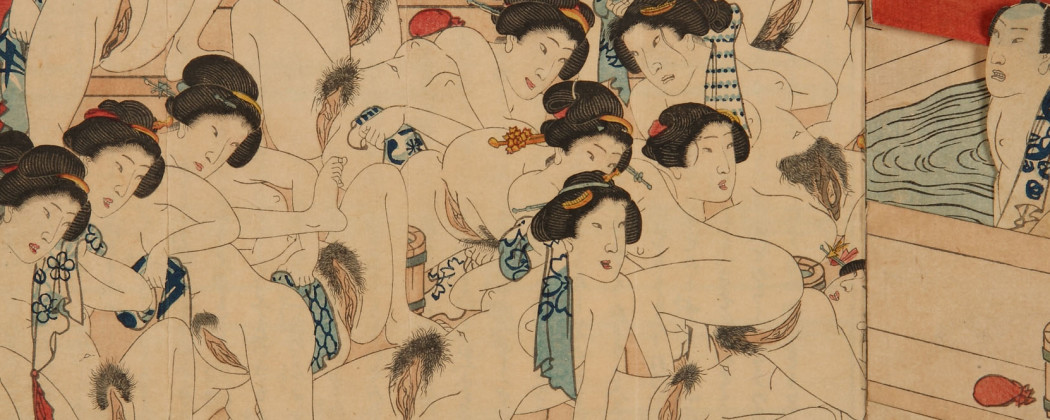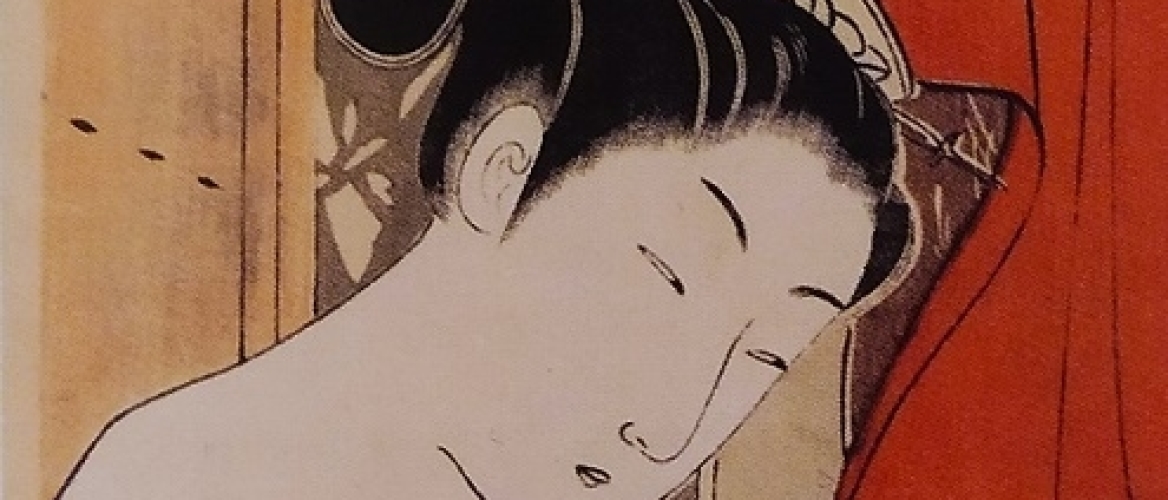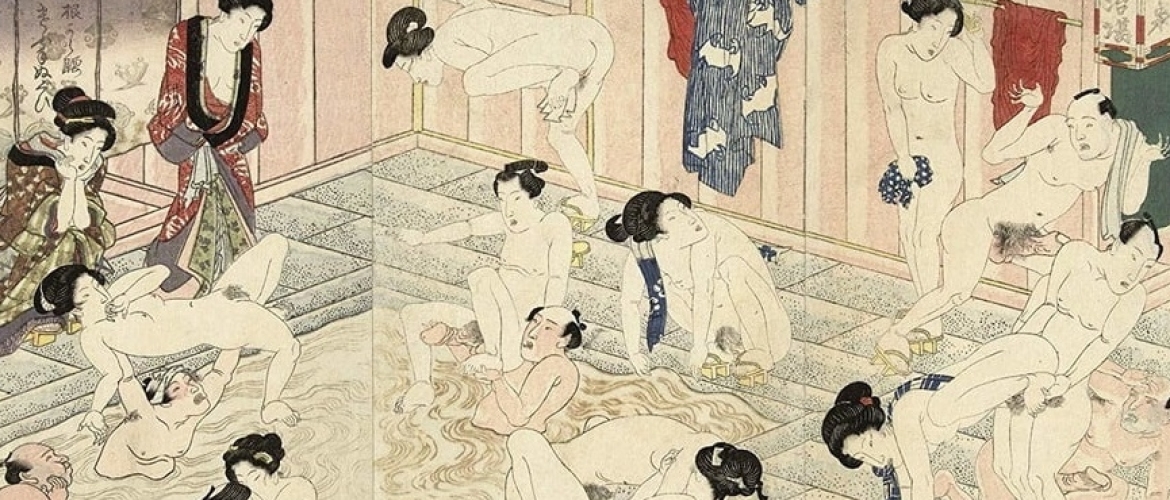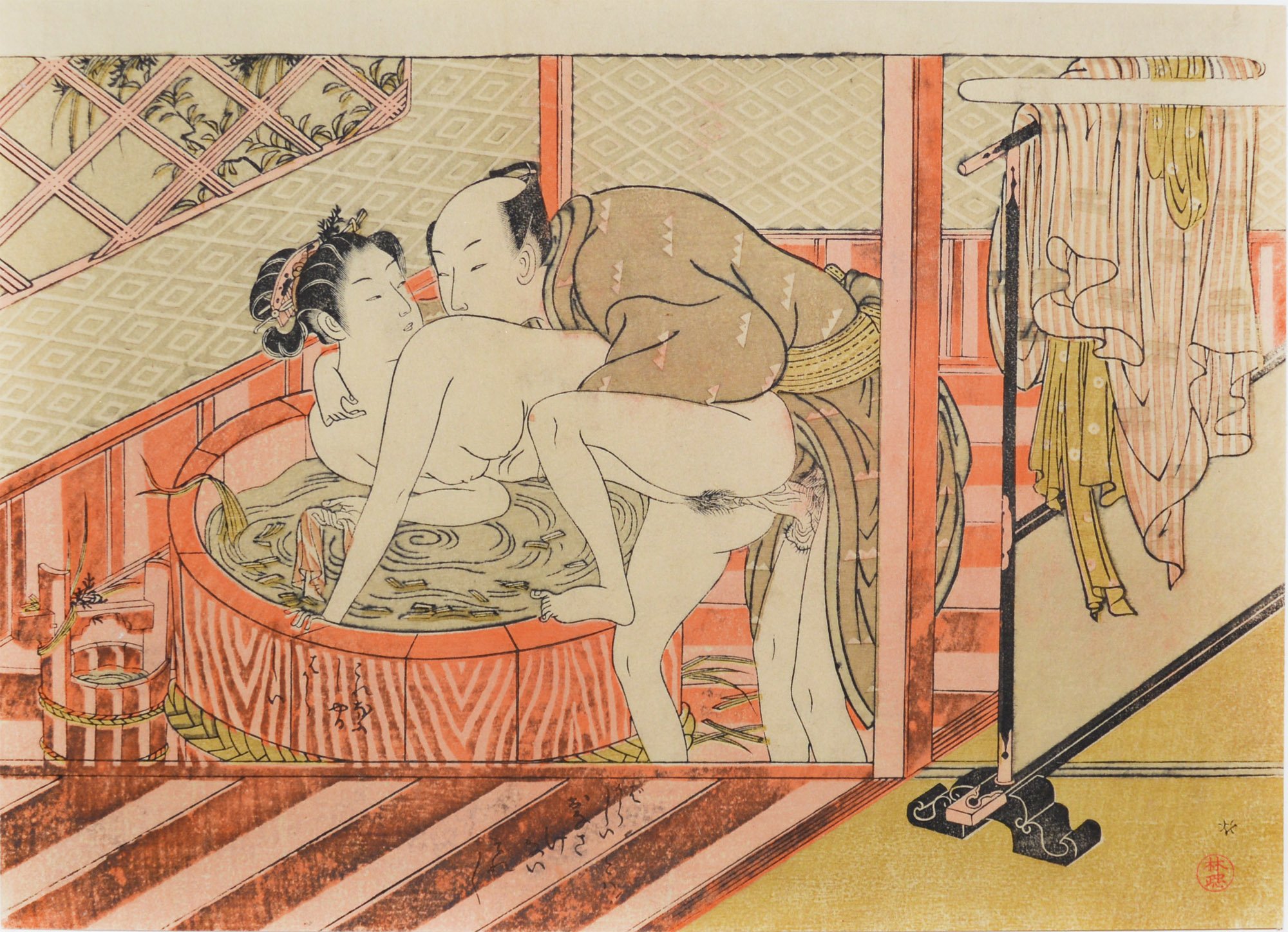
I came across the following descriptions of this eye-catching bathhouse scene by the ukiyo-e master Isoda Koryusai (1735-1790) with the views of three separate ukiyo-e experts:
Rosina Buckland: “The image for the fifth month, Satsuki, or the ‘month of rice seedlings,’ is a scene of a husband becoming aroused at the sight of his wife undressing for a bath, a theme common in shunga. She has cast her robes over a clothes rail, and is just stepping into the high tub. The poem translates, ‘Iris bath/ with edges so wet!/ Entering the rainy season.’ Irises blossomed in the fifth month, and on the fifth day people scattered the leaves into bathwater to dispel the malignant vapours of summer.
This was just when the rainy season began, bringing with it the strenuous work of rice-planting. The poem contains double-entrendres, with its ‘wet edges’ and ‘entering’, and ‘getting wet’ was also a slang term for sexual relations. In the dialogue below, the woman scolds her husband, saying,
‘What do you think you are doing? Stop acting silly!’. He tries to cajole her: ‘Silly? Don’t be so heartless. Come on.’
His half-hidden face suggests his stelthy approach, but he holds his wife gently and their gazes meet in apparent mutual understanding.

‘Fifth month‘ (c.1773) from the series ‘Prosperous Flowers of the Elegant Twelve Months (Furyu juniki no eiga)‘ by Isoda Koryusai (1735-1790)
Inge Klompmakers: ‘An erotic rendezvous in the bathroom. The naked woman, about to step into the bath, is embraced from behind by a man. Her clothes hang on the ikō (clothes’ stand). This print is related to the fifth month (Satsuki), traditionally associated with iris flowers. Cut iris leaves float on the surface of the water. The iris is also associated with Boy’s Day, a festival in honour of boys, which takes place each fifth day of the fifth month. This flower is a symbol of victory and male strength due to its leaf’s resemblance to a sword blade (see ‘Symbols and attributes’ for more information on the iris as symbol in shunga).’
Chris Uhlenbeck: ‘The Fifth Month (Satsuki). An erotic rendezvous at the bath. Haga Toru (1996:97-102) explains that love-making in Edo-period prints is often precarious and that artists vied with one another in inventing locations, moments and positions that expressed the sentiment of kiwadoi – the ‘dangerous, risky, or pressing’,. The bath, generally a public place, is a typical example of such a location: the threat of being caught and the possibilities open for voyeurism are essential for creating the sexual tension.
This print is linked to the fifth lunar month, or satsuki (literally, ‘shore or swamp month’), which corresponds with spring. The haiku in the right margin reads:
Shubuyu ni
nure no en ari
tsuiri kana
Iris bath
on an open veranda
-the start
of the rainy season
Nure no en connotes an open veranda; nure also means ‘to get wet’ or ‘to make love’. This obvious analogy probably has to do with the fact that an open veranda becomes slippery after a rain shower. Iris blossoms have been scattered in the bath, a practice thought to ensure good health. The iris is also a flower associated with the fifth month.
Take a deep breath and check out more sensual bathhouse scenes…!!!
Sources:
‘Japanese Erotic Fantasies‘ by Chris Uhlenbeck and others.
‘Japanese Erotic Prints: Shunga by Harunobu & Koryusai‘ by Inge Klompmakers
‘Shunga, Erotic Art in Japan‘ by Rosina Buckland


